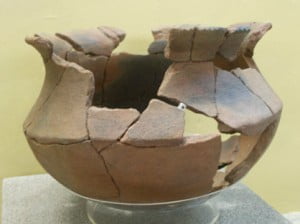The Sigatoka Sand Dunes National Park is rightly famous for its rich archaeological history.
The first significant clues to man’s arrival in fiji were discovered at the Sigatoka Sand Dunes National Park in the late 1980’s when a team of archaeologists discovered an ancient burial site.

So far over 50 individual skeletons have be excavated and their arrival in Fiji has been dated to approximately 2600 years ago.
Scatters of pottery shards and other cultural materials found within the dunes have led experts to believe that these early inhabitants are of Lapita origin.
Lapita takes its name from an archaeological site in New Caledonia where similar pottery was first discovered.
The Sand Dunes have produced the largest collection of complete and near complete Lapita pots from the Pacific region.

Today evidence of the past is clearly visible throughout the dunes system as stone tools; human remains and pottery continue to be uncovered by natural processes.
Many unearthed artifacts are on display at the Fiji Museum in Suva.
Lapita is a term applied to an ancient Pacific Ocean archaeological culture which is believed by many archaeologists to be the common ancestor of several cultures in Polynesia, Micronesia, and some coastal areas of Melanesia.



You must be logged in to post a comment.